The best high-tech museums in the world in photos
Business Week magazine published a colorful photo gallery with pictures of US high-tech museums that look more like a new generation of learning centers. The exhibits themselves, and sometimes the methods of their demonstration, are directly related to high technology.
Museum of Massachusetts Institute of Technology
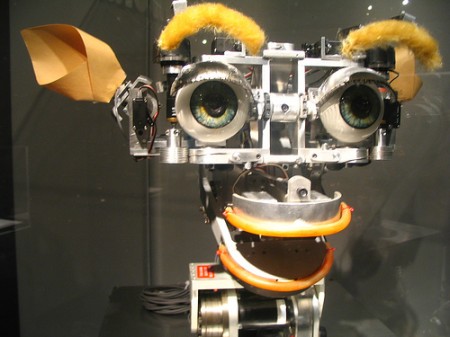
The oldest US high-tech museum is the Museum of the Massachusetts Institute of Technology in Cambridge, opened in 1971. About 80 thousand people visit it every year. This is not a museum at all, but a demonstration site for those scientific and technical projects being carried out at MIT. This year, for example, underwater robots, a compact urban concept car and a demonstration of cancer research on the genetic model of a zebra fish will be on display.
National Aerospace Museum
Washington, opened in 1976, with 5.23 million visitors last year.
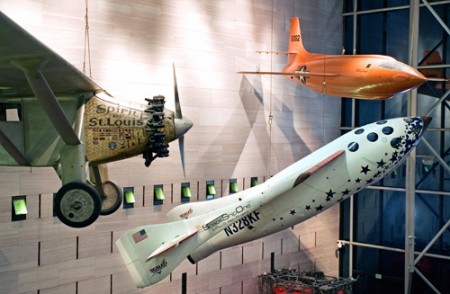
')
This museum contains the entire history of aviation, including the first aircraft to make a transatlantic flight (Spirit of St. Louis; 1927), the first to overcome the speed of sound (Bell X-1; 1947), and the first private ship ascended to orbit (SpaceShipOne; 2004). The museum has video kiosks with which you can explore in detail the three-dimensional models of each exhibit. Soon these models will appear on the website.
Museum of Cinematography
New York, 1988, about 95 thousand.

Visitors can create their own movie soundtracks and play Star Wars right in the museum. This year will open a virtual reality cave with stereoscopic effects on the walls.
Technical Museum of Innovation
San Jose (California), 1990, 325 thousand
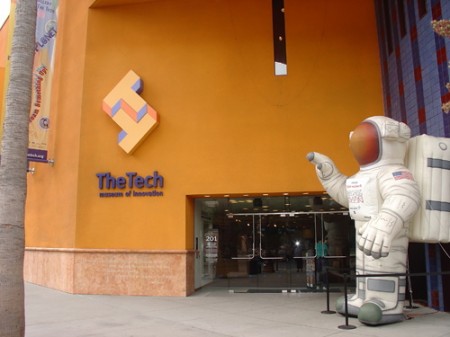
Located in the heart of Silicon Valley, TheTech Museum attracts high-tech excursions. Each visitor is given a radio broadcast right at the entrance, which records information about all the exhibits in the area of operation (apparently, you need to run your hand next to the radio tag to “save” the exhibit in the radio broadcast memory), and at the exit the visitor connects to laptop information about all these exhibits.
Computer History Museum
Mountain View (California), 1996, 45 thousand
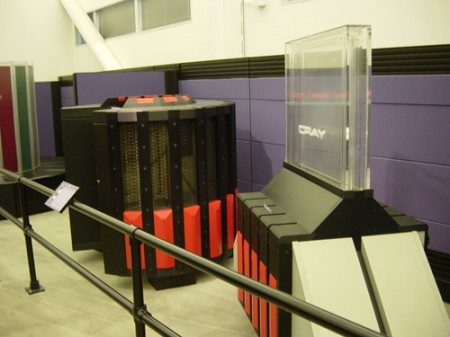
Children of the information age can here discover the world of computer "dinosaurs" - large computers from the past, ranging from the famous 1944 ENIAC with 18,000 vacuum tubes and the German Enigma encryption machine, ending with the relatively modern Cray-2 supercomputer (in the photo) built in 1984 to simulate nuclear explosions during the Cold War.
Interactive Music Museum (Experience Music Project)
Seattle, 1999, 452 thousand
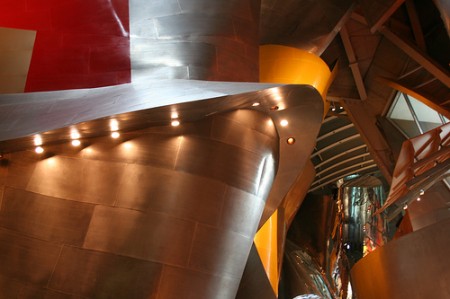
This unique museum, opened with the help of Microsoft’s co-founder, multimillionaire and music lover Paul Allen, with 60 million people, is trying to combine high technology and music. Hightech is used to study from an unknown side of the work of famous musicians such as Bob Dylan. Each sightseer receives a PDA with touchscreen, through which an interactive tour takes place. The architecture of the museum itself, whose building is among the most expensive buildings in the world, is also striking.
International Spy Museum
Washington, 2002, more than 700 thousand.
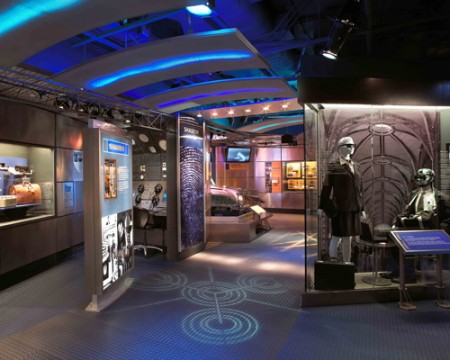
Always and everywhere in their work spies relied on high technology. In this museum you can see many things from their arsenal: invisible ink, tiny cameras, night vision goggles. The principle of operation of each gadget is explained on the big screen. There is a “spy school” with interactive entertainment (spying on Soviet bases, decoding audio messages, hacking safes, a lie detector test).
Science Fiction Museum and Hall of Fame
Seattle, 2004, 452 thousand
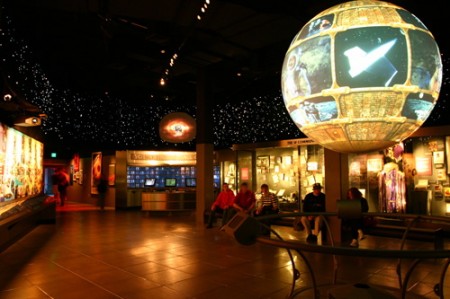
The museum building is an extension to the famous Interactive Music Museum mentioned above. This explains its high attendance. By the way, this museum is another project of Paul Alain, who, in addition to music, is also interested in science fiction. Here, in a fabulous futuristic atmosphere, you can see the worlds of Steven Spielberg, James Cameron, George Lucas, Arthur Clark (all and people are on the museum's supervisory board) and other great futurists.
Museum of Robots
Nagoya (Japan), 2006
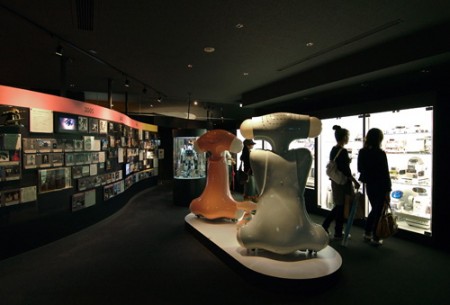
Visitors to this museum may think that they are in the future. Here are collected the most famous robots from the movies of the past, as well as modern, fully functional machines that can write, read, walk and run, talk, play games, clean the house, etc. In addition to the exhibits themselves, an impressive collection of documents on robotics has been collected. There is a special pavilion where you can control the robot with your own hands.
Broadband Museum
Chicago, 1987–2003, a secondary discovery in 2007, it is expected from 200 thousand to 250 thousand.
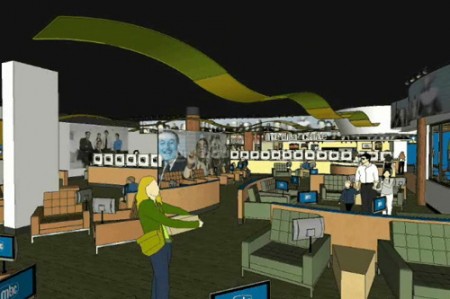
After a four-year break, the museum will open this year again, but in a different building in the downtown. A media cafe will be part of the museum — computers give access to 85,000 hours of archival audio and video content stored since the 1950s. last century to the present day. There are a total of eight thematic sections, by genre: comedy, drama, music show, children's shows, talk shows, news, sports and games / reality shows. In the museum you can also see how a real radio or television studio is arranged.
By the way, in Russia there are also quite a few scientific and technical museums of various kinds: the aviation museum, the museum of cosmonautics, the museum of radio and television and others. All of them were open in Soviet times. Since then, it seems, the number of visitors has decreased by an order. Unlike domestic ones, most American high-tech museums were opened after 1990.
Museum of Massachusetts Institute of Technology

The oldest US high-tech museum is the Museum of the Massachusetts Institute of Technology in Cambridge, opened in 1971. About 80 thousand people visit it every year. This is not a museum at all, but a demonstration site for those scientific and technical projects being carried out at MIT. This year, for example, underwater robots, a compact urban concept car and a demonstration of cancer research on the genetic model of a zebra fish will be on display.
National Aerospace Museum
Washington, opened in 1976, with 5.23 million visitors last year.

')
This museum contains the entire history of aviation, including the first aircraft to make a transatlantic flight (Spirit of St. Louis; 1927), the first to overcome the speed of sound (Bell X-1; 1947), and the first private ship ascended to orbit (SpaceShipOne; 2004). The museum has video kiosks with which you can explore in detail the three-dimensional models of each exhibit. Soon these models will appear on the website.
Museum of Cinematography
New York, 1988, about 95 thousand.

Visitors can create their own movie soundtracks and play Star Wars right in the museum. This year will open a virtual reality cave with stereoscopic effects on the walls.
Technical Museum of Innovation
San Jose (California), 1990, 325 thousand

Located in the heart of Silicon Valley, TheTech Museum attracts high-tech excursions. Each visitor is given a radio broadcast right at the entrance, which records information about all the exhibits in the area of operation (apparently, you need to run your hand next to the radio tag to “save” the exhibit in the radio broadcast memory), and at the exit the visitor connects to laptop information about all these exhibits.
Computer History Museum
Mountain View (California), 1996, 45 thousand

Children of the information age can here discover the world of computer "dinosaurs" - large computers from the past, ranging from the famous 1944 ENIAC with 18,000 vacuum tubes and the German Enigma encryption machine, ending with the relatively modern Cray-2 supercomputer (in the photo) built in 1984 to simulate nuclear explosions during the Cold War.
Interactive Music Museum (Experience Music Project)
Seattle, 1999, 452 thousand

This unique museum, opened with the help of Microsoft’s co-founder, multimillionaire and music lover Paul Allen, with 60 million people, is trying to combine high technology and music. Hightech is used to study from an unknown side of the work of famous musicians such as Bob Dylan. Each sightseer receives a PDA with touchscreen, through which an interactive tour takes place. The architecture of the museum itself, whose building is among the most expensive buildings in the world, is also striking.
International Spy Museum
Washington, 2002, more than 700 thousand.

Always and everywhere in their work spies relied on high technology. In this museum you can see many things from their arsenal: invisible ink, tiny cameras, night vision goggles. The principle of operation of each gadget is explained on the big screen. There is a “spy school” with interactive entertainment (spying on Soviet bases, decoding audio messages, hacking safes, a lie detector test).
Science Fiction Museum and Hall of Fame
Seattle, 2004, 452 thousand

The museum building is an extension to the famous Interactive Music Museum mentioned above. This explains its high attendance. By the way, this museum is another project of Paul Alain, who, in addition to music, is also interested in science fiction. Here, in a fabulous futuristic atmosphere, you can see the worlds of Steven Spielberg, James Cameron, George Lucas, Arthur Clark (all and people are on the museum's supervisory board) and other great futurists.
Museum of Robots
Nagoya (Japan), 2006

Visitors to this museum may think that they are in the future. Here are collected the most famous robots from the movies of the past, as well as modern, fully functional machines that can write, read, walk and run, talk, play games, clean the house, etc. In addition to the exhibits themselves, an impressive collection of documents on robotics has been collected. There is a special pavilion where you can control the robot with your own hands.
Broadband Museum
Chicago, 1987–2003, a secondary discovery in 2007, it is expected from 200 thousand to 250 thousand.

After a four-year break, the museum will open this year again, but in a different building in the downtown. A media cafe will be part of the museum — computers give access to 85,000 hours of archival audio and video content stored since the 1950s. last century to the present day. There are a total of eight thematic sections, by genre: comedy, drama, music show, children's shows, talk shows, news, sports and games / reality shows. In the museum you can also see how a real radio or television studio is arranged.
By the way, in Russia there are also quite a few scientific and technical museums of various kinds: the aviation museum, the museum of cosmonautics, the museum of radio and television and others. All of them were open in Soviet times. Since then, it seems, the number of visitors has decreased by an order. Unlike domestic ones, most American high-tech museums were opened after 1990.
Source: https://habr.com/ru/post/5087/
All Articles